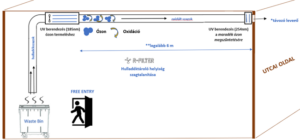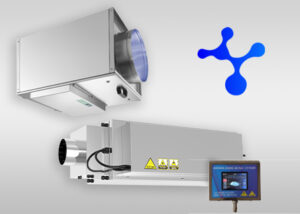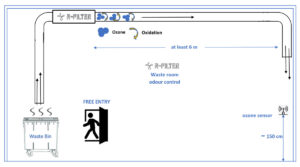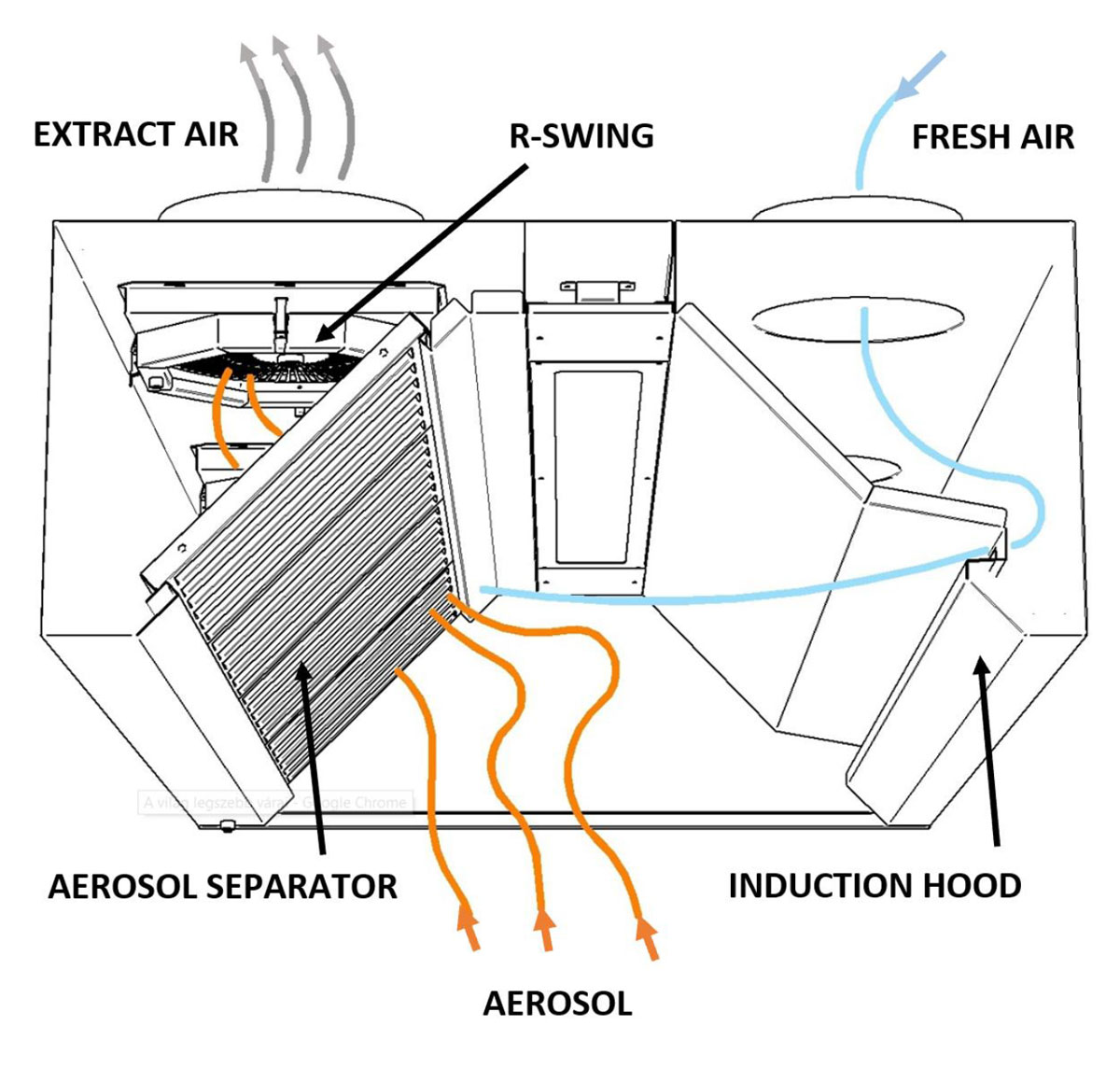
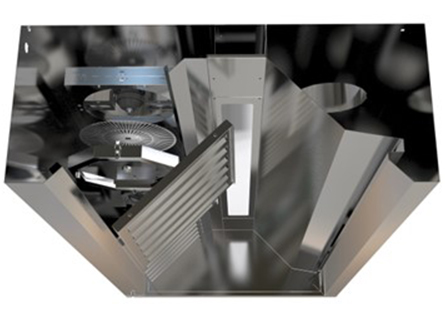
The EU standard EN 18869-5:2007 still included an efficiency test to determine the separation efficiency of aerosol separators for the treatment of aerosols in commercial kitchens.
The draft standard prEN 16282-6, which wanted to replace this standard, also included an efficiency test of the separation, but it was removed from the EN 16282-6:2020 standard that is now in force! Of course, the flame penetration test of the separator is still included.
It cannot be a coincidence that the new standard omits the separation efficiency test, as the composition of the particle size distribution of kitchen aerosols can vary greatly depending on the cooking device, cooking process, type of kitchen operation (canteen, restaurant, etc.) and the distance from the point of origin. It is therefore difficult to uniformly assess the percentage separation efficiency of a specific aerosol separator.
Kitchen aerosol separators are baffle separators in which the flow is diverted in bends or around obstacles (e.g. baffles) so that the particles cannot follow the streamline and leave it due to their inertia. When inertial forces are also exploited by radial deflection, this is called centrifugal separation.
The following figure shows the fractional separating efficiency of a typical aerosol separator on the market in %. [1] [1]

If some manufacturers of aerosol separators state a separation efficiency of 99.999 % for their products, it is difficult to attribute this to the particle size. Experience shows that the exhaust air system after the separators is still exposed to a considerable grease load. To prevent this, we have installed a rotating disc in the extraction nozzle of the kitchen ventilation hood after the separator to remove the remaining grease particles. Flame penetration tested EN 18869-5:2007 "A" or EN 16282-6:2020 "F-1" aerosol separator and R-Swing rotating disc are built into our stainless steel kitchen hoods. The fresh air blown in is colder than the exhaust air, which causes the gas molecules to condense on the surface of the separator or rotating disc and increases separation. The high speed of the rotating disc causes the air to rotate to a certain extent, and an increase in speed leads to a drop in pressure, which also contributes to the condensation of the gaseous molecules.
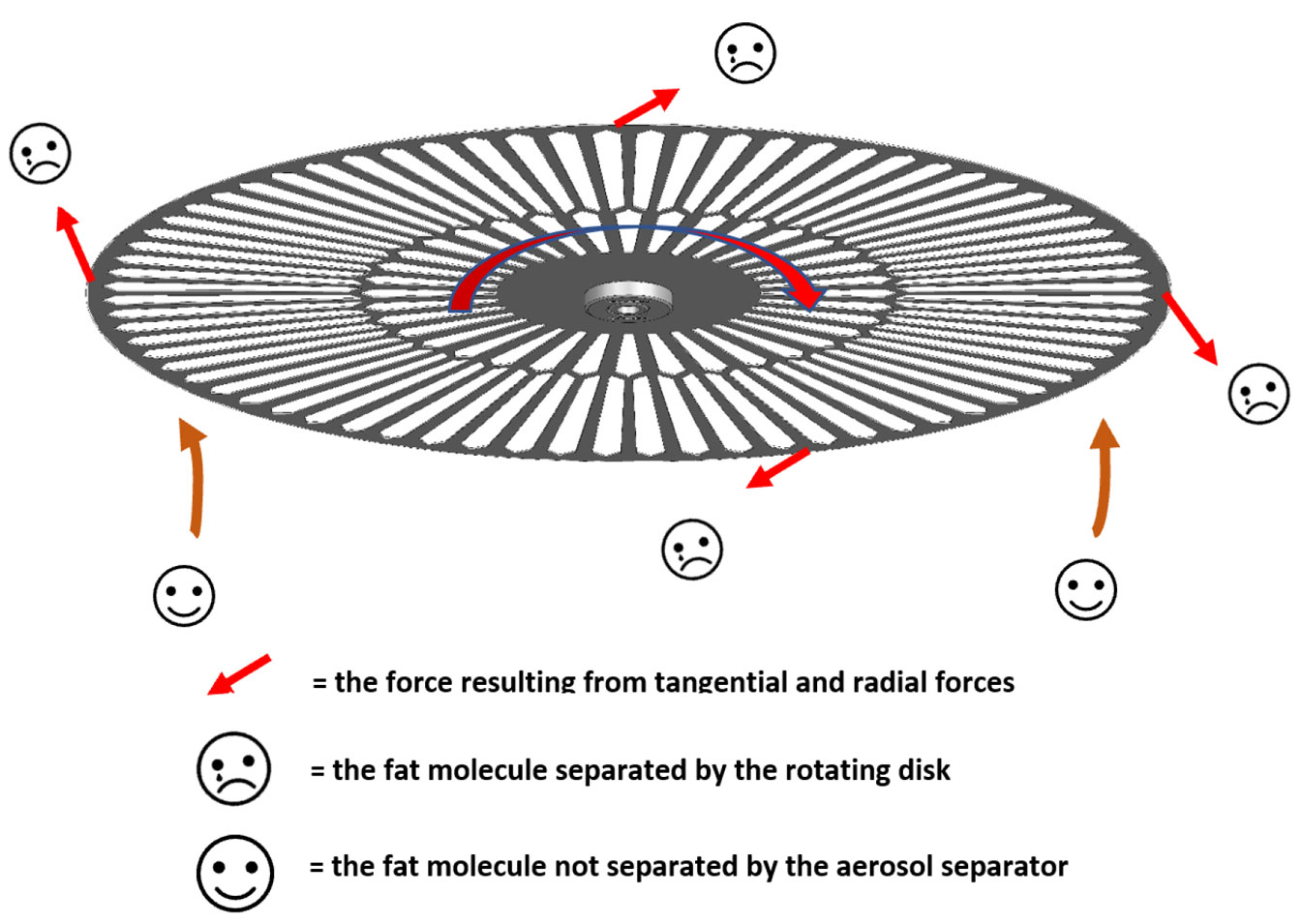
The motor that rotates the disc is built into the suction port of the kitchen ventilation hood. In our experience, the rotation speed has a significant impact on the gripping performance of the disc. The reason for the increase is that the particles are more likely to collide with the disk at higher rotation speeds. The spokes of the disc, which are made of stainless steel, catch them. Due to the high rotation speed, the catched particles are moved towards the ends of the spokes by centrifugal force. Grease and oil accumulate along the perimeter of the support frame and can be easily removed without frequent maintenance. The ideal rotational speed is around 2200 rpm. At a lower air speed (2-3 m/s), the particles move slower in the flow allowing a longer contact time with the spokes of the disk and therefore a greater probability of capture.
For thermal cooking appliances, the EN 16282-6:2020 standard stipulates that only aerosol separators that have been tested for flame penetration may be used. So if the R-Swing is installed in a kitchen ventilation hood not manufactured by us, a flame penetration tested aerosol separator must be installed in front of the R-Swing.
Reference: [1] DMT (TÜV NORD GROUP), Aerosol¬_separators_web

